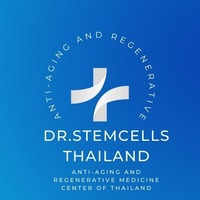Varicose Veins


Varicose Veins
Varicose veins are enlarged, twisted, and bulging veins that most commonly appear on the legs and feet. They develop when the one-way valves in veins become weakened or damaged, allowing blood to flow backward and pool, which causes the veins to swell and become visible under the skin134.
Causes and Risk Factors
- Valve Dysfunction: In healthy veins, small valves keep blood flowing toward the heart. When these valves fail, blood can collect in the veins, leading to varicosities145.
- Weak Vein Walls: Stretched or weakened vein walls can also contribute to valve dysfunction and blood pooling46.
- Increased Pressure: Standing or sitting for long periods increases pressure in the leg veins, making them more susceptible to becoming varicose14.
- Risk Factors: Age, family history, female sex, pregnancy, obesity, lack of movement, and previous blood clots all increase the risk45.
Symptoms
- Visible, twisted, bulging veins, usually blue or dark purple, just under the skin134.
- Achy, heavy, or uncomfortable feeling in the legs, especially after standing or sitting for long periods136.
- Burning, throbbing, muscle cramping, or swelling in the lower legs146.
- Itching around one or more veins18.
- Skin discoloration or changes around the varicose vein168.
- In severe cases, ulcers or open sores may develop on the skin near the ankles68.
Complications
Most people experience only cosmetic concerns or mild discomfort. However, untreated varicose veins can sometimes lead to:
- Skin ulcers
- Bleeding
- Blood clots
- Chronic venous insufficiency (impaired blood return to the heart)368
Diagnosis
Diagnosis is usually based on physical examination and patient history. In some cases, ultrasound or other imaging tests may be used to assess blood flow and rule out more serious conditions5.
Treatment
- Lifestyle Changes: Exercise, weight management, elevating the legs, and avoiding long periods of standing or sitting137.
- Compression Stockings: Help improve blood flow and reduce symptoms17.
- Medical Procedures: For more severe or persistent cases, options include sclerotherapy (injecting a solution into the vein), laser therapy, radiofrequency ablation, or surgical removal of veins137.
Summary Table
| Aspect | Details |
|---|---|
| Appearance | Bulging, twisted, blue or dark purple veins, most often on legs and feet |
| Main Causes | Weakened/damaged valves, increased pressure, weak vein walls |
| Symptoms | Aching, heaviness, swelling, itching, skin changes, ulcers (severe cases) |
| Risk Factors | Age, family history, female sex, pregnancy, obesity, inactivity |
| Treatment | Lifestyle changes, compression stockings, medical/surgical interventions |
| Complications | Ulcers, bleeding, blood clots, chronic venous insufficiency (rare) |
Consult with Our Team of Experts Now!
At DrStemCellsThailand (DRSCT)‘s Anti-Aging and Regenerative Medicine Center of Thailand, we emphasize comprehensive evaluations and personalized treatment plans of Cellular Therapy and Stem Cells for managing various health conditions. If you have questions about Neuromodulation Programs (NMP) or would like more information on our services, consult with our experts today!
Consult with Our Team of Experts Now!
References:
- Mayo Clinic: Varicose veins – Symptoms and causes1
- Cleveland Clinic: Varicose Veins: Causes & Treatment3
- NHS Inform: Varicose veins4
- Healthline: Varicose (Spider) Veins: Causes, Symptoms, and Treatments5
- Johns Hopkins Medicine: Varicose Veins6
- Medical News Today: Varicose veins: Causes, symptoms, treatment7
- Johns Hopkins Medicine: Venous Disease8















